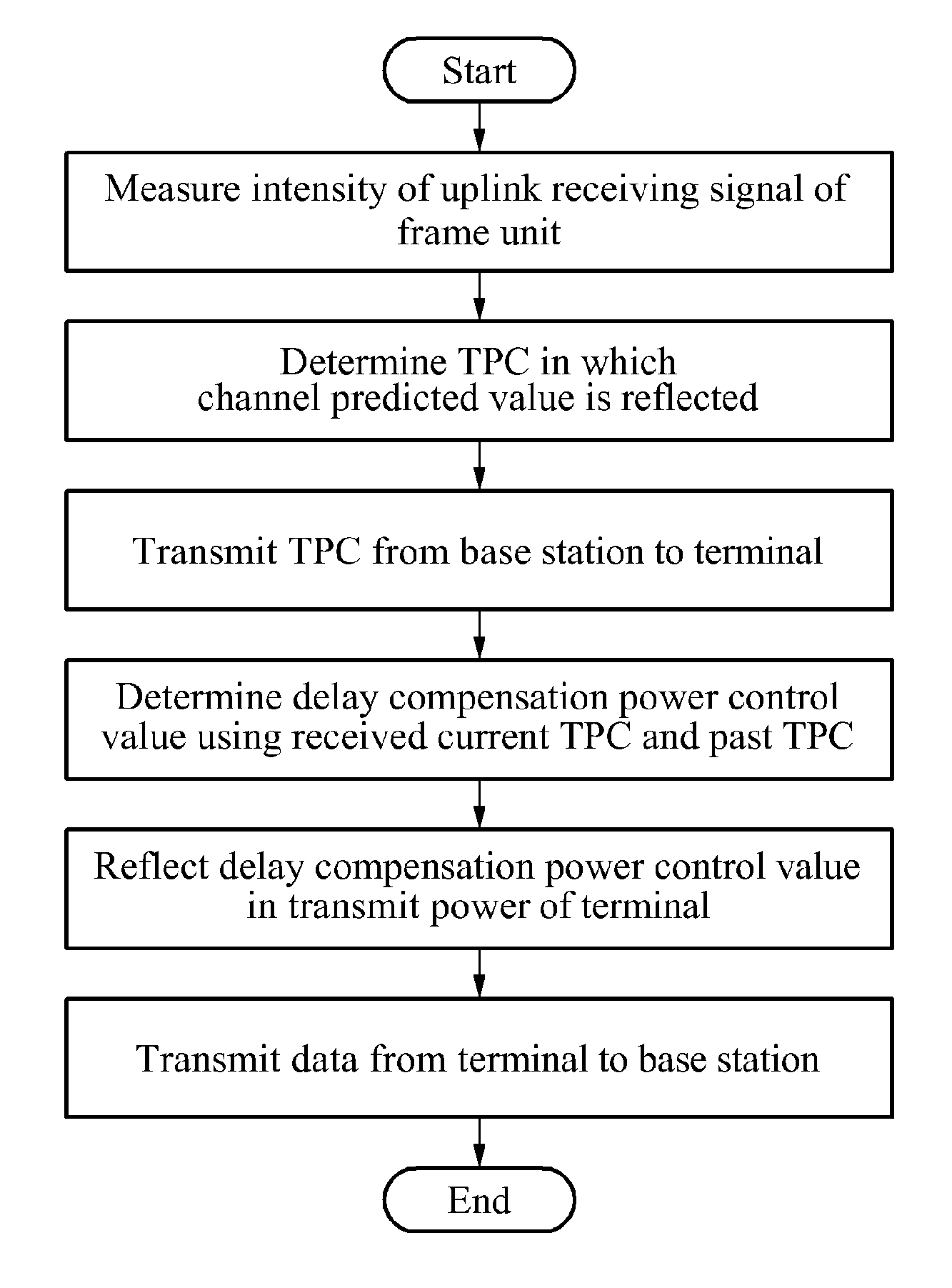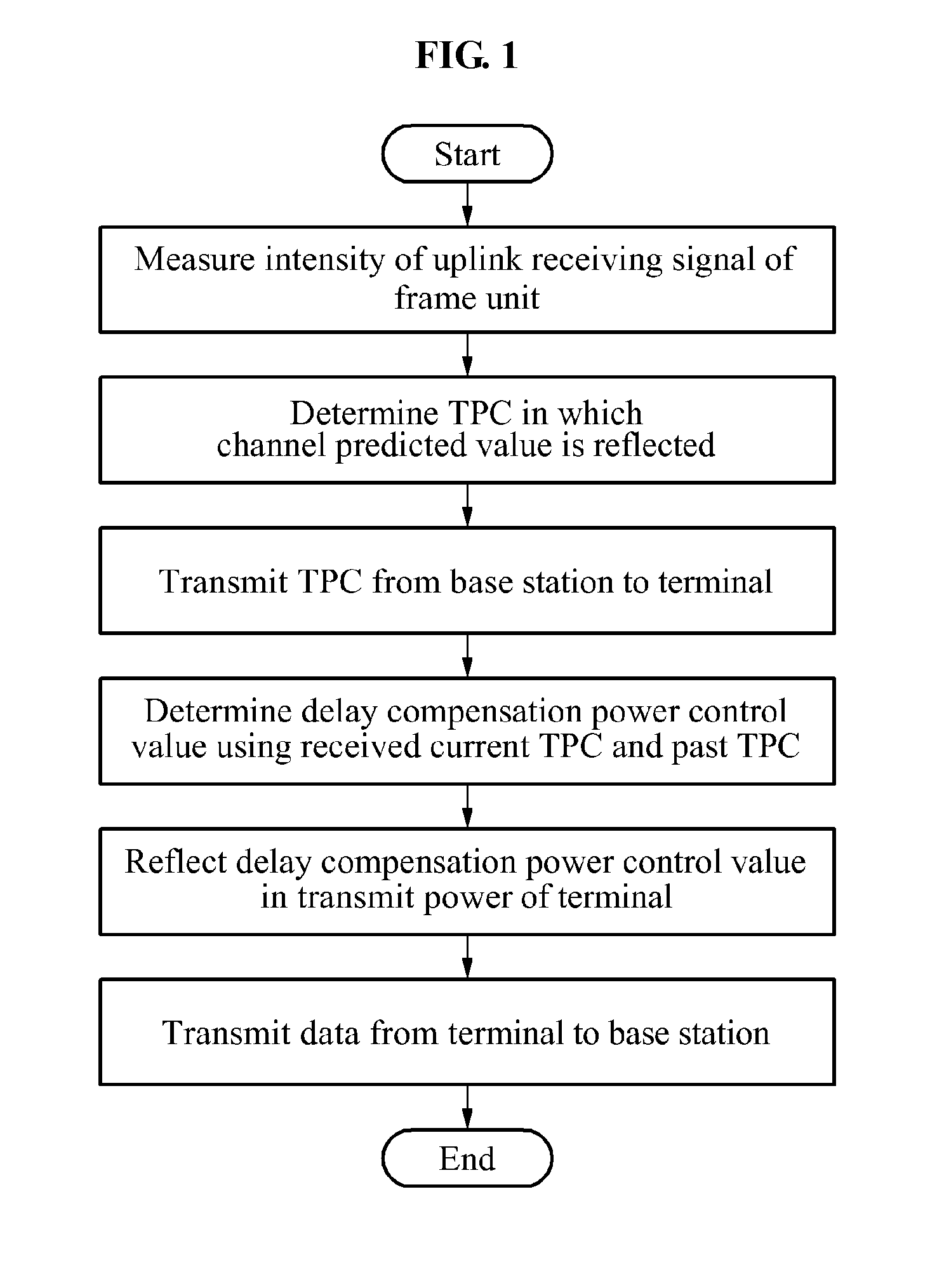Methods for power control and link adapation in lte-based mobile communication system
a mobile communication system and power control technology, applied in power management, electrical equipment, radio transmission, etc., can solve problems such as unnecessary interference, data transmission errors, and long transmission delay, and achieve the effect of maintaining compatibility
- Summary
- Abstract
- Description
- Claims
- Application Information
AI Technical Summary
Benefits of technology
Problems solved by technology
Method used
Image
Examples
Embodiment Construction
[0047]FIG. 1 is a flowchart illustrating a power control for an uplink physical uplink shared channel (PUSCH) transmission in a long term evolution (LTE)-based satellite mobile communication system having a long round trip delay time as suggested above.
[0048]FIG. 2 is a detailed flowchart illustrating a power control for an uplink PUSCH transmission in an LTE-based satellite mobile communication system having a long round trip delay time as suggested above.
[0049]FIG. 3 is a flowchart illustrating a downlink link adaptation considering a long round trip delay time as suggested.
[0050]FIG. 4 is a detailed flowchart illustrating a downlink link adaptation method considering a long round trip delay time as suggested. Reference will now be made in detail to embodiments of the present invention, examples of which are illustrated in FIGS. 1 through 4.
[0051]The embodiments will be described with respect to an LTE-based satellite mobile communication system. However, the method of the present...
PUM
 Login to View More
Login to View More Abstract
Description
Claims
Application Information
 Login to View More
Login to View More - R&D
- Intellectual Property
- Life Sciences
- Materials
- Tech Scout
- Unparalleled Data Quality
- Higher Quality Content
- 60% Fewer Hallucinations
Browse by: Latest US Patents, China's latest patents, Technical Efficacy Thesaurus, Application Domain, Technology Topic, Popular Technical Reports.
© 2025 PatSnap. All rights reserved.Legal|Privacy policy|Modern Slavery Act Transparency Statement|Sitemap|About US| Contact US: help@patsnap.com



